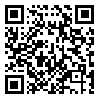Volume 15, Issue 10 (1-2016)
Modares Mechanical Engineering 2016, 15(10): 201-211 |
Back to browse issues page
1- Amirkabir University
Abstract: (11550 Views)
Consumption of cutting fluids imposes high costs on industry. These cutting fluids contaminate the environment and are harmful to human health. Minimum quantity lubrication technique (MQL) is a new approach to reduction of cutting fluids consumption, improving efficiency of cutting fluid at machining zone and using harmless fluids. However, this technique faces cooling limitation in grinding. The purpose of this study is an accurate study of heat transfer mechanism in minimum quantity lubrication technique by its temperature numerical simulation and improving the cooling ability of its air jet by using a simple and inexpensive vortex tube. For this purpose, a system was designed and manufactured to measure the convection heat transfer coefficient of different conditions of MQL environments. The result of convection heat transfer tests shows 95% share of compressed air in heat transfer and also air pressure is a more important factor than temperature in cooling process. The result of temperature numerical simulation shows that by increasing pressure, the increasing rate of convection heat transfer coefficient decreases; also, the cooling ability temperature of the vortex tube at low thermal power is tangible. In grinding of soft steel, the minimum quantity lubrication technique with cold air (CAMQL) in comparison with other methods lead to significant reduction of tangential grinding force and friction coefficient, but in general, except in the case of optimum condition which has the highest heat transfer coefficient, surface finish is worse which relate to low heat transfer coefficient of gases at low pressures.
Keywords: Grinding, Minimum Quantity Lubrication with Cold Air, Heat transfer mechanism, Grinding force, surface quality
Article Type: Research Article |
Subject:
Production Methods
Received: 2015/06/2 | Accepted: 2015/08/30 | Published: 2015/09/14
Received: 2015/06/2 | Accepted: 2015/08/30 | Published: 2015/09/14
| Rights and permissions | |
 |
This work is licensed under a Creative Commons Attribution-NonCommercial 4.0 International License. |


